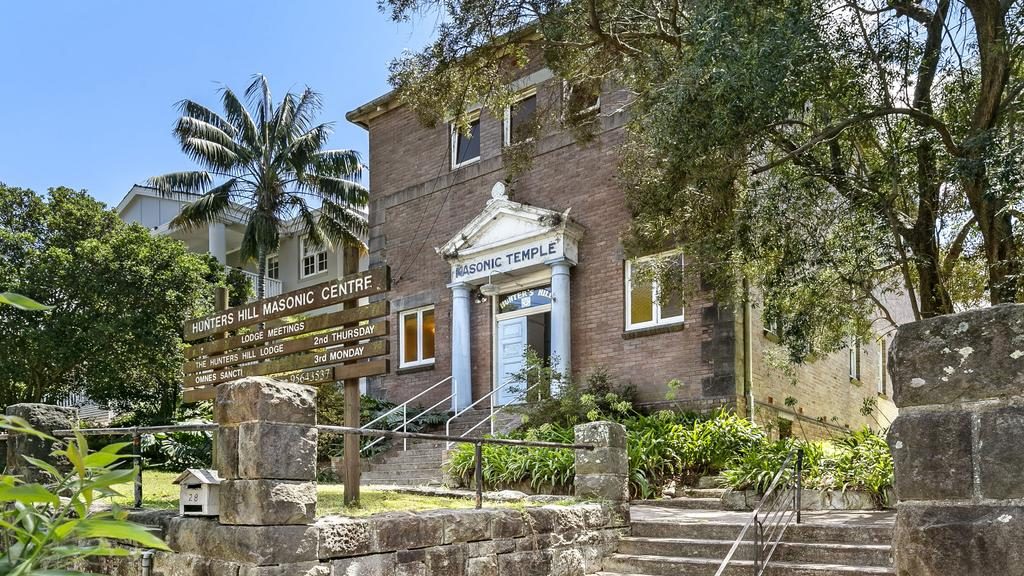NSW Masonic Temple’s future in hands of buyers

The sign outside Hunter’s Hill’s Masonic Temple states that meetings are held every second Thursday and Omnes Sancti (which translates to ‘all the holy’) is every third Monday.
But it’s been at least three years since Freemasons exchanged secret handshakes at the temple, which has been listed for sale with Simon Harrison and George Gialouris from Belle Property — Hunters Hill.
“I’ve never sold a property like this before,” Harrison says, which is why a buyers’ guide has not been attached to the building that occupies a prime real estate parcel on the peninsula’s main thoroughfare at 28 Alexandra St.
Commercial Insights: Subscribe to receive the latest news and updates
Harrison says developers, homeowner-buyers wishing to refurbish or rebuild and people looking for commercial premises will all have a different opinion about a fair market price for the property.
“It’s about imagination, budget and what people want to use it for that will determine the price,” Harrison says.
“It’s a blank canvas with a lot of scale. There are two vast halls that could be converted into a warehouse-type dwelling but it will need a lot of love.”
The double-brick Masonic Temple was built in 1921 on an elevated 853sqm with rear-lane access.
It is set between two residential properties, two doors down from Hunters Hill Town Hall on one corner and post office on the other.

The first floor contains original floorboards.
It is in a conservation area with R2 residential zoning, which allows for duplex developments and a range of other limited low-rise commercial and residential uses, subject to council approval.
Although not as ostentatious of some of the other Masonic Lodges scattered around established suburban Sydney, the Hunters Hill centre has features in common that are heavy with allegorical meaning and symbolism that harks back to Biblical and ancient times.
An entrance flanked by ionic pillars topped by a pediment has layers of meaning but at a basic level represents the twin pillars that stand at the gates of sacred places.
The layout is straightforward — at entrance level, a hall with a small stage has the original intact timber floorboards. A kitchen and ladies’ and gents’ bathrooms are also on this floor.
Upstairs is the ceremonial hall that has ‘Masonic Blue’ carpet — yes, that colour has been officially recorded and there is, of course, significance attached to it.
In the centre of this room with a soaring ceiling is a small rectangular chequerboard floor with a star at its centre. The black and white is said to represent the yin and yang of the human condition.
The Freemasons most recognisable emblem is on the door — the compass and square overlapped.

The ceremonial hall contains Freemason paraphernalia.
There are 15,000 Freemasons in NSW and the ACT, though anecdotally membership of the fraternal organisation established in the late 1500s is in decline.
Occasionally, northern district properties with Freemason ownership come onto the market.
Late last year a B2-zoned contemporary function hall with offices and a commercial kitchen in Epping sold to Parramatta Council, which plans to turn it into a community centre.
In 2013, the Eastwood Masonic Temple was bought by a developer as part of a multiple sale.
The Hunters Hill Masonic Temple is for sale for expressions of interest closing on Tuesday, March 26.
This article from the District Northern Times originally appeared as “Freemasons to sell Masonic Temple with an intriguing past and yet-to-be-decided future”.







